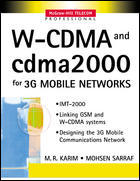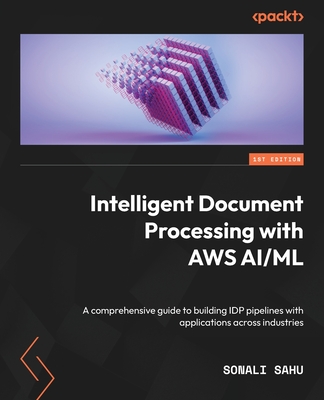Designing cdma 2000 Systems
暫譯: 設計 CDMA 2000 系統
Leonhard Korowajczuk, Bruno S. A. Xavier, Arlindo M. F. Filho, Leila Z. Ribeiro, Cristine Korowajcz
- 出版商: Wiley
- 出版日期: 2004-04-02
- 售價: $1,880
- 貴賓價: 9.8 折 $1,842
- 語言: 英文
- 頁數: 918
- 裝訂: Hardcover
- ISBN: 0470853999
- ISBN-13: 9780470853993
-
相關分類:
行動通訊 Mobile-communication
下單後立即進貨 (約5~7天)
買這商品的人也買了...
-
 計算機組織與設計--軟硬體界面第二版 (Computer Organization & Design, 2/e)
計算機組織與設計--軟硬體界面第二版 (Computer Organization & Design, 2/e)$680$537 -
 ASP.NET 程式設計徹底研究
ASP.NET 程式設計徹底研究$590$466 -
 STRUTS 實作手冊(Struts in Action: Building Web Applications with the Leading Java Framework)
STRUTS 實作手冊(Struts in Action: Building Web Applications with the Leading Java Framework)$690$538 -
 鳥哥的 Linux 私房菜-伺服器架設篇
鳥哥的 Linux 私房菜-伺服器架設篇$750$638 -
 Java 2 教學手冊
Java 2 教學手冊$590$460 -
 鳥哥的 Linux 私房菜─基礎學習篇增訂版
鳥哥的 Linux 私房菜─基礎學習篇增訂版$560$476 -
 Fundamentals of Database Systems, 4/e (IE)
Fundamentals of Database Systems, 4/e (IE)$1,090$1,068 -
 Dreamweaver MX 2004 魔法書中文版
Dreamweaver MX 2004 魔法書中文版$490$387 -
 SQL Server 效能調校聖經
SQL Server 效能調校聖經$720$612 -
 專案管理實務入門-引導專案成功的52條準則
專案管理實務入門-引導專案成功的52條準則$280$218 -
 人月神話:軟體專案管理之道 (20 週年紀念版)(The Mythical Man-Month: Essays on Software Engineering, Anniversary Edition, 2/e)
人月神話:軟體專案管理之道 (20 週年紀念版)(The Mythical Man-Month: Essays on Software Engineering, Anniversary Edition, 2/e)$480$379 -
 JSP 2.0 技術手冊
JSP 2.0 技術手冊$750$593 -
 建構嵌入式 Linux 系統
建構嵌入式 Linux 系統$780$616 -
 CCNA 認證教戰手冊 Exam 640-801 (CCNA Cisco Certified Network Associate Study Guide, 4/e)
CCNA 認證教戰手冊 Exam 640-801 (CCNA Cisco Certified Network Associate Study Guide, 4/e)$780$616 -
 FreeBSD 5.x 架設管理與應用
FreeBSD 5.x 架設管理與應用$490$382 -
 JSP 與 Servlet 500 個應用範例技巧大全集
JSP 與 Servlet 500 個應用範例技巧大全集$590$460 -
 最新 JavaScript 完整語法參考辭典 第三版
最新 JavaScript 完整語法參考辭典 第三版$490$382 -
 CMMI Distilled 中文版 (CMMI Distilled, 2/e)
CMMI Distilled 中文版 (CMMI Distilled, 2/e)$450$383 -
 Windows 驅動程式設計指南 (Programming the Microsoft Windows Driver Model, 2/e)
Windows 驅動程式設計指南 (Programming the Microsoft Windows Driver Model, 2/e)$890$703 -
 Word 排版藝術
Word 排版藝術$620$490 -
 Eclipse 整合開發工具 (Eclipse)
Eclipse 整合開發工具 (Eclipse)$540$427 -
 Linux 程式設計教學手冊
Linux 程式設計教學手冊$780$616 -
 Internet TCP/IP 協定觀念與實作, 2/e
Internet TCP/IP 協定觀念與實作, 2/e$580$458 -
 RFID 技術與應用
RFID 技術與應用$480$379 -
 Head First Design Patterns (Paperback)
Head First Design Patterns (Paperback)$2,410$2,290
相關主題
商品描述
Description:
Over the past few years the wireless technology industry has seen massive growth with ever increasing mobile subscriber rates. Simple analog radio tools have evolved into sophisticated adaptive technologies. These now employ advanced hardware, modulation and coding techniques and processing solutions, unimaginable a decade ago. Network designs based on CDMA 2000 are becoming extremely complex and highly standardized. Designing CDMA 2000 Systems provides engineers with the background information needed to understand the CDMA 2000 technology, by describing design techniques and available algorithms.
This book:
- Covers the main standards involved in the technology specification whilst focussing on those aspects required for the design of CDMA systems.
- Describes in detail the structure of CDMA 2000 systems and provides guidelines for their optimisation.
Written in a thorough and knowledgeable manner this book fills a gap in the information available today and will serve as a reference for designers and operators. Its specialist coverage from introductory to advanced level serves as an excellent 'how to' manual for all those looking for one complete source on CDMA 2000
Table of Contents:
Preface.
Acknowledgements.
About the Authors.
1. Introduction to Spread Spectrum Systems.
1.1 Multiple Access Techniques.
1.2 The Spread Spectrum Concept.
1.3 Spread Spectrum Techniques.
1.4 Processing Gain PG.
1.5 Spreading and De-spreading of the DS-CDMA Signal.
2. CDMA Evolution.
2.1 CDMA Standards and Evolution.
2.2 CDMA Timeline.
2.3 Evolution of CDMA Standards.
3. Codes and Sequences.
3.1 Introduction.
3.2 Maximal Length Sequences.
3.3 Walsh Sequences.
3.4 Quasi-Orthogonal Function.
4. Forward Link Channels.
4.1 Forward Link Channel Structure in IS-95 CDMA Systems.
4.2 Forward Link Channel Structure in cdma2000 Systems.
5. Reverse Link Channels.
5.1 CDMA IS-95 Reverse Link Channel Structure.
5.2 cdma2000 Reverse Link Channel Structures.
6. Call Processing in CDMA Systems.
6.1 Introduction.
6.2 Call Processing.
6.3 Messages Exchanged during Call Establishment.
6.4 Reg istration.
6.5 Roaming.
6.6 The Authentication Process.
7. Power Control, Handoff and Radio Resource Management.
7.1 Introduction.
7.2 Main Characteristics of Power Control in the System Access State.
7.3 Power Control in Mobile Station Control on the Traffic Channel State.
7.4 Introduction to Handoff Processes.
7.5 Maintenance of Pilot Sets.
7.6 Handoff Types.
7.7 Introduction to Radio Resource Management.
8. EVDO and EVDV.
8.1 EVDO Requirements (IS-856).
8.2 EVDV Requirements (R.S0026).
8.3 EVDO Reference Model.
8.4 Channel Structure.
8.5 Air Interface Encoding.
8.6 Modulation/Encoding .
8.7 Power Control.
8.8 Scheduling.
9. Radio Network Engineering Fundamentals.
9.1 Design Principles.
9.2 CDMA Equipment Block Diagram.
9.3 Transmit Stage.
9.4 Channel.
9.5 Link Management.
9.6 Receive Stage.
10. Network Design.
10.1 Network Design Flow.
10.2 Databases.
10.3 Regions Database.
10.4 Service Classes.
10.5 User Distribution.
10.6 Composite Predictions.
10.7 Link Budget.
10.8 Call Placement Simulation.
10.9 Network Enhancement.
10.10 Network Optimisation.
10.11 Network Performance.
10.12 Conclusion.
11. Traffic Dimensioning.
11.1 Introduction.
11.2 Demand Characterisation.
11.3 Traffic Simulation.
11.4 Performance Analysis.
11.5 Summary.
Appendix A – Link Load and Noise Rise.
Appendix B – Capacity Dependence on User Mix.
Bibliography and References.
Acronyms.
Index
商品描述(中文翻譯)
**描述:**
在過去幾年中,無線技術產業經歷了巨大的增長,移動用戶數量不斷增加。簡單的類比無線工具已演變為複雜的自適應技術。這些技術現在採用了先進的硬體、調變和編碼技術以及處理解決方案,這在十年前是難以想像的。基於 CDMA 2000 的網路設計變得極其複雜且高度標準化。《設計 CDMA 2000 系統》為工程師提供了理解 CDMA 2000 技術所需的背景資訊,通過描述設計技術和可用的演算法。
本書:
- 涵蓋了技術規範中涉及的主要標準,同時專注於設計 CDMA 系統所需的各個方面。
- 詳細描述了 CDMA 2000 系統的結構,並提供了優化的指導方針。
本書以徹底且知識淵博的方式撰寫,填補了當前可用資訊的空白,並將作為設計師和操作員的參考資料。其從入門到進階的專業內容,為所有尋求 CDMA 2000 完整資料來源的人提供了優秀的「如何做」手冊。
**目錄:**
前言。
致謝。
關於作者。
1. 擴頻系統介紹。
1.1 多重存取技術。
1.2 擴頻概念。
1.3 擴頻技術。
1.4 處理增益 PG。
1.5 DS-CDMA 信號的擴展與去擴展。
2. CDMA 演變。
2.1 CDMA 標準與演變。
2.2 CDMA 時間線。
2.3 CDMA 標準的演變。
3. 代碼與序列。
3.1 介紹。
3.2 最大長度序列。
3.3 Walsh 序列。
3.4 準正交函數。
4. 前向鏈路通道。
4.1 IS-95 CDMA 系統中的前向鏈路通道結構。
4.2 cdma2000 系統中的前向鏈路通道結構。
5. 反向鏈路通道。
5.1 CDMA IS-95 反向鏈路通道結構。
5.2 cdma2000 反向鏈路通道結構。
6. CDMA 系統中的呼叫處理。
6.1 介紹。
6.2 呼叫處理。
6.3 呼叫建立過程中交換的消息。
6.4 註冊。
6.5 漫遊。
6.6 認證過程。
7. 功率控制、切換與無線資源管理。
7.1 介紹。
7.2 系統接入狀態下功率控制的主要特徵。
7.3 在流量通道狀態下的移動站功率控制。
7.4 切換過程介紹。
7.5 導航信號集的維護。
7.6 切換類型。
7.7 無線資源管理介紹。
8. EVDO 和 EVDV。
8.1 EVDO 要求 (IS-856)。
8.2 EVDV 要求 (R.S0026)。
8.3 EVDO 參考模型。
8.4 通道結構。
8.5 空中介面編碼。
8.6 調變/編碼。
8.7 功率控制。
8.8 調度。
9. 無線網路工程基礎。
9.1 設計原則。
9.2 CDMA 設備框圖。
9.3 發射階段。
9.4 通道。
9.5 鏈路管理。
9.6 接收階段。
10. 網路設計。
10.1 網路設計流程。
10.2 數據庫。
10.3 區域數據庫。
10.4 服務類別。
10.5 用戶分佈。
10.6 綜合預測。
10.7 鏈路預算。
10.8 呼叫放置模擬。
10.9 網路增強。
10.10 網路優化。
10.11 網路性能。
10.12 結論。
11. 流量維度。
11.1 介紹。
11.2 需求特徵。
11.3 流量模擬。
11.4 性能分析。
11.5 總結。
附錄 A – 鏈路負載與噪聲上升。
附錄 B – 容量對用戶組合的依賴。
參考文獻。
縮寫詞。
索引。































